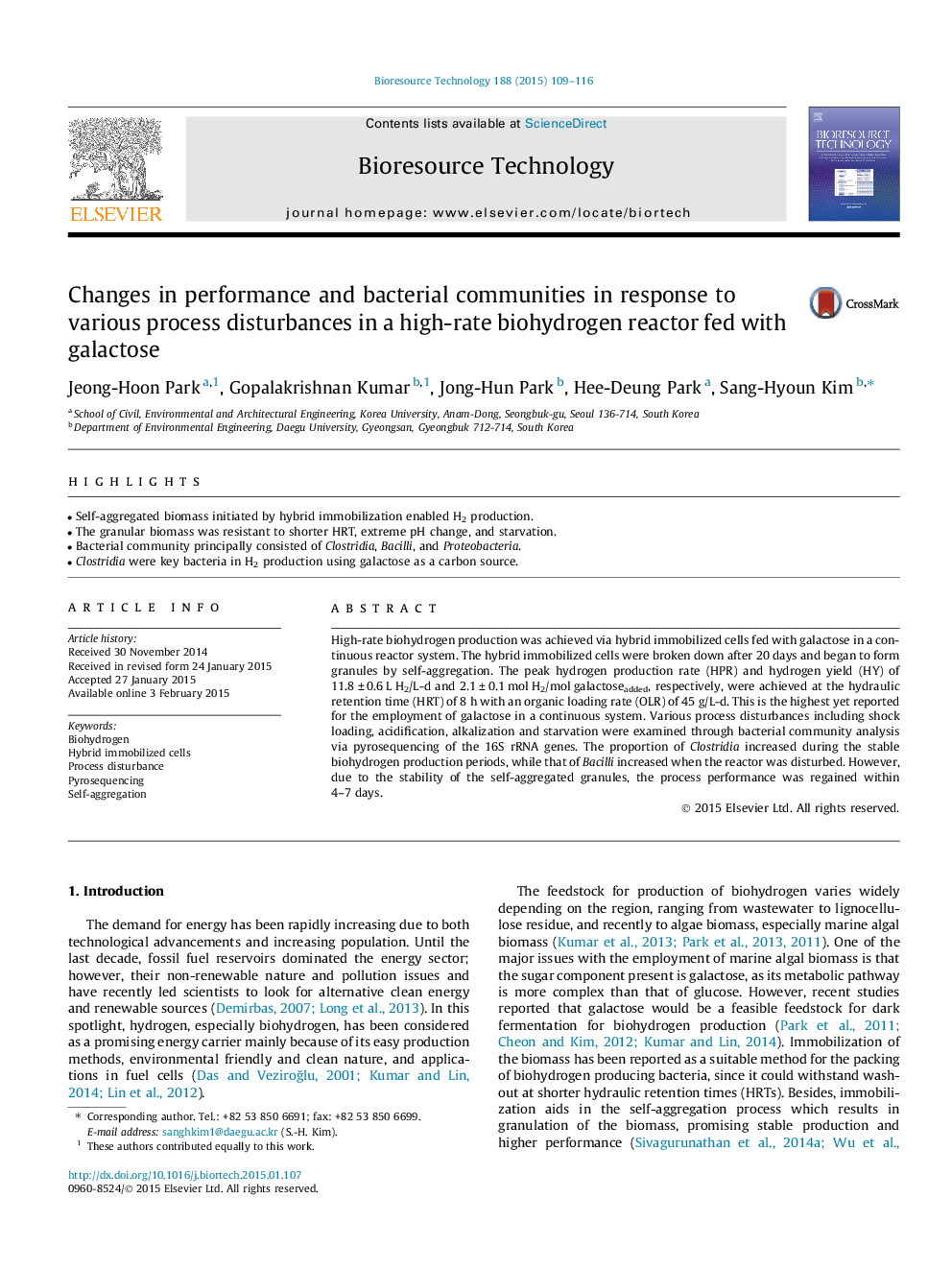| کد مقاله | کد نشریه | سال انتشار | مقاله انگلیسی | نسخه تمام متن |
|---|---|---|---|---|
| 679709 | 1459955 | 2015 | 8 صفحه PDF | دانلود رایگان |
• Self-aggregated biomass initiated by hybrid immobilization enabled H2 production.
• The granular biomass was resistant to shorter HRT, extreme pH change, and starvation.
• Bacterial community principally consisted of Clostridia, Bacilli, and Proteobacteria.
• Clostridia were key bacteria in H2 production using galactose as a carbon source.
High-rate biohydrogen production was achieved via hybrid immobilized cells fed with galactose in a continuous reactor system. The hybrid immobilized cells were broken down after 20 days and began to form granules by self-aggregation. The peak hydrogen production rate (HPR) and hydrogen yield (HY) of 11.8 ± 0.6 L H2/L-d and 2.1 ± 0.1 mol H2/mol galactoseadded, respectively, were achieved at the hydraulic retention time (HRT) of 8 h with an organic loading rate (OLR) of 45 g/L-d. This is the highest yet reported for the employment of galactose in a continuous system. Various process disturbances including shock loading, acidification, alkalization and starvation were examined through bacterial community analysis via pyrosequencing of the 16S rRNA genes. The proportion of Clostridia increased during the stable biohydrogen production periods, while that of Bacilli increased when the reactor was disturbed. However, due to the stability of the self-aggregated granules, the process performance was regained within 4–7 days.
Journal: Bioresource Technology - Volume 188, July 2015, Pages 109–116
